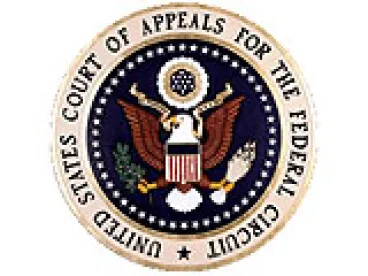On January 9, 2017, the Federal Circuit held that Phigenix lacked standing to appeal the final written decision of nonobviousness from the U.S. Patent Trial and Appeal Board (“PTAB”) because Phigenix did not offer sufficient evidence that it had suffered a requisite “injury in fact.”
Background
When challenging patents before the PTAB, petitioners enjoy cost, efficiency, and procedural advantages over district court litigation and ex parte reexamination. Accordingly, post-grant challenges before the PTAB have quickly integrated into the intellectual property strategy of many companies. Because the PTAB is an arm of the executive branch, its powers come from Article I of the Constitution, and its final written decisions have a different status than the judgments of an Article III court. Article I courts are not constrained by the “case or controversy” requirement that limits the jurisdiction of Article III courts of the judicial branch. Thus, the PTAB (as an Article I court) can hear and resolve challenges to a patent’s validity that Article III courts may not. That divergence in jurisdiction creates a problem for petitioners who are dissatisfied with the PTAB’s final written decision. Although any petitioner may seek inter partes review (“IPR”), appeals from the PTAB are to the Federal Circuit under 35 U.S.C. § 141(c). Patent owners will always have standing to appeal an adverse PTAB decision. Petitioners who lose in the PTAB, however, may be left without the ability to appeal the PTAB’s decision. Such was the case in Phigenix, Inc. v. ImmunoGen, Inc. [1]
Phigenix, Inc. sought review of ImmunoGen, Inc.’s U.S. Patent No. 8,337,856 (the “’856 patent”). ImmunoGen exclusively licenses the ’856 patent to Genentech Inc., and Genentech makes Kadcyla®, a metastatic breast cancer drug that purportedly embodies the ’856 patent claims. Phigenix does not manufacture any products, but purportedly has developed “an extensive intellectual property portfolio” that includes U.S. Patent No. 8,080,534 (the “’534 patent”). Phigenix alleged that its ’534 patent covers Genentech’s activities related to Kadcyla® and the ’856 patent, [2] and Phigenix therefore sued Genentech for infringement of the ’534 patent in a separate district court action. [3] Phigenix challenged the ’856 patent in an IPR proceeding “[t]o further its commercialization efforts with respect to its patent portfolio” after Genentech refused its offer to license the ’534 patent. [4] The PTAB ultimately rejected Phigenix’s arguments that the challenged claims of the ’856 patent were obvious, prompting Phigenix’s appeal to the Federal Circuit.
Federal Circuit’s Decision
The Federal Circuit held that a petitioner seeking to appeal the PTAB’s final written decision must prove Article III standing, even though Article III standing “is not necessarily a requirement to appear before an administrative agency.” [5] That is, an appellant “must have (1) suffered an injury in fact, (2) that is fairly traceable to the challenged conduct of the [appellee, and] (3) that is likely to be redressed by a favorable judicial decision.” [6]
The court, however, had not yet established the contours of an appellant’s obligation to demonstrate standing when challenging a final agency action, so for the first time, the court examined: (1) the burden of production, (2) the evidence an appellant must produce to meet that burden, and (3) when an appellant must produce that evidence in an appeal of an IPR from the PTAB.
For the burden of production, the Federal Circuit applied the summary judgment burden, requiring the party alleging standing to “introduce enough evidence on an issue to have the issue decided by the fact-finder, rather than decided against [it] in a peremptory ruling.” [7] An appellant must either identify “record evidence sufficient to support its standing to seek review or, if there is none because standing was not an issue before the agency, submit additional evidence to the court,” such as by affidavit or other evidence. [8] If there is no record evidence to support standing, the appellant must produce evidence on appeal at the “earliest possible opportunity.” [9]
After identifying these standards, the court determined that Phigenix had not demonstrated an “injury in fact.” Phigenix asserted that it suffered “an actual economic injury because the ’856 patent increases competition between itself and ImmunoGen.” [10] According to Phigenix, the existence of ImmunoGen’s ’856 patent “encumber[ed] Phigenix’s licensing efforts,” costing it millions of dollars in potential licensing revenue. [11] The court rejected this argument for failure of evidence, noting that “Phigenix does not contend that it faces risk of infringing the ’856 patent, that it is an actual or prospective licensee of the patent, or that it otherwise plans to take any action that would implicate the patent,” and Phigenix’s declarations stating that the ’856 patent had harmed Phigenix’s licensing activities contained only “conclusory allegations.” [12] Thus, the court held Phigenix lacked standing. [13] In finding lack of standing based on a failure of evidence, the court left open the ability of future patent challengers to establish standing if they submit admissible evidence of competitive harm. [14]
The court also determined that Phigenix had not suffered an injury in fact merely because 35 U.S.C. § 141(c) provides a statutory appeal from the PTAB to the Federal Circuit. The court stated that Phigenix’s procedural right was not violated because it exercised its right to appeal here. That procedural right to appeal does not, however, create standing where it otherwise does not exist. Finally, the court rejected Phigenix’s argument that it was injured based on the estoppel provision of 35 U.S.C. § 315(e)(1), which could prevent it from challenging the validity of the patent in a future infringement suit. The court cited its own parallel decision for inter partes reexaminations [15] and reasoned that the § 315(e)(1) estoppel provision cannot constitute an injury in fact when the appellant is not engaged in any activity that would give rise to a possible infringement suit. [16]
Looking Forward
Although there are advantages to challenging patents in an IPR proceeding, this decision confirms that a petitioner who wants to appeal a final PTAB decision will need to produce sufficient, admissible evidence of standing as part of its appeal. K&L Gates will continue to monitor this and related decisions and send updates regarding any developments.
[1] See Phigenix, Inc. v. ImmunoGen, Inc., No. 2016-1544 (Fed. Cir. Jan. 9, 2017), http://www.cafc.uscourts.gov/sites/default/files/opinions-orders/16-1544.Opinion.1-6-2017.1.PDF.
[2] Phigenix describes itself as a “for-profit discovery stage biotechnology, pharmaceutical, and biomedical research company that focuses on the use of novel molecular therapeutics designed to fight cancer.” ImmunoGen, at 2–3.
[3] See First Amended Complaint, Phigenix, Inc. v. Genentech, Inc., No. 15-CV-1238-BLF (N.D. Cal. Jun. 16, 2014), ECF No. 21.
[4] ImmunoGen, at 3.
[5] See id. at 5 (“[A]lthough Article III standing is not necessarily a requirement to appear before an administrative agency, an appellant must nevertheless supply the requisite proof of an injury in fact when it seeks review of an agency’s final action in a federal court.” (citations omitted)).
[6] Id. at 4 (citing Spokeo Inc. v. Robins, 136 S. Ct. 1540, 1547 (2016)). However, the court noted that while an appellant’s obligation to establish an injury in fact remains firm, the “normal standards for redressability and immediacy” need not be entirely met. See ImmunoGen, at 5 n.2.
[7] Id. at 6 n.3 (citation omitted); see also id. at 7 (“Our review of Lujan and the Supreme Court’s subsequent decisions leads us to conclude that the summary judgment burden of production applies in cases where an appellant seeks review of a final agency action and its standing comes into doubt.” (citations omitted)).
[8] Id. at 8 (citation omitted).
[9] Id.
[10] Id. at 9.
[11] Id.
[12] Id. The court did state: “It is possible that, if Phigenix had licensed the ’534 patent to the same parties to which ImmunoGen had licensed the ’856 patent, the invalidation of the ’856 patent might have increased Phigenix’s revenues.” Id. at 10.
[13] Id. at 11.
The court noted that several aspects of the declarations submitted by Phigenix failed to lay the requisite foundation to be “admissible in evidence” under Fed. R. Civ. P. § 56(c)(4). Id. at 11 n.6. For example, Dr. Donald (the President and CEO of Phigenix) testified that “Phigenix and Genentech had multiple discussions through . . . telephone conversations concerning the Phigenix technology and its patent portfolio.” Id. The court, however, found Dr. Donald’s declaration did not establish “(1) a particular number was dialed; (2) the number dialed was ‘assigned at the time’ to Genentech; or (3) ‘the call related to business reasonably transacted over the telephone.’” Id.
[15] See Consumer Watchdog v. Wisconsin Alumni Res. Found., 753 F.3d 1258 (Fed. Cir. 2014) (dismissing appeal from inter partes reexamination for lack of standing and finding that appellant had not suffered an“injury in fact”).
[16] ImmunoGen, at 13 (citation omitted)






 />i
/>i
